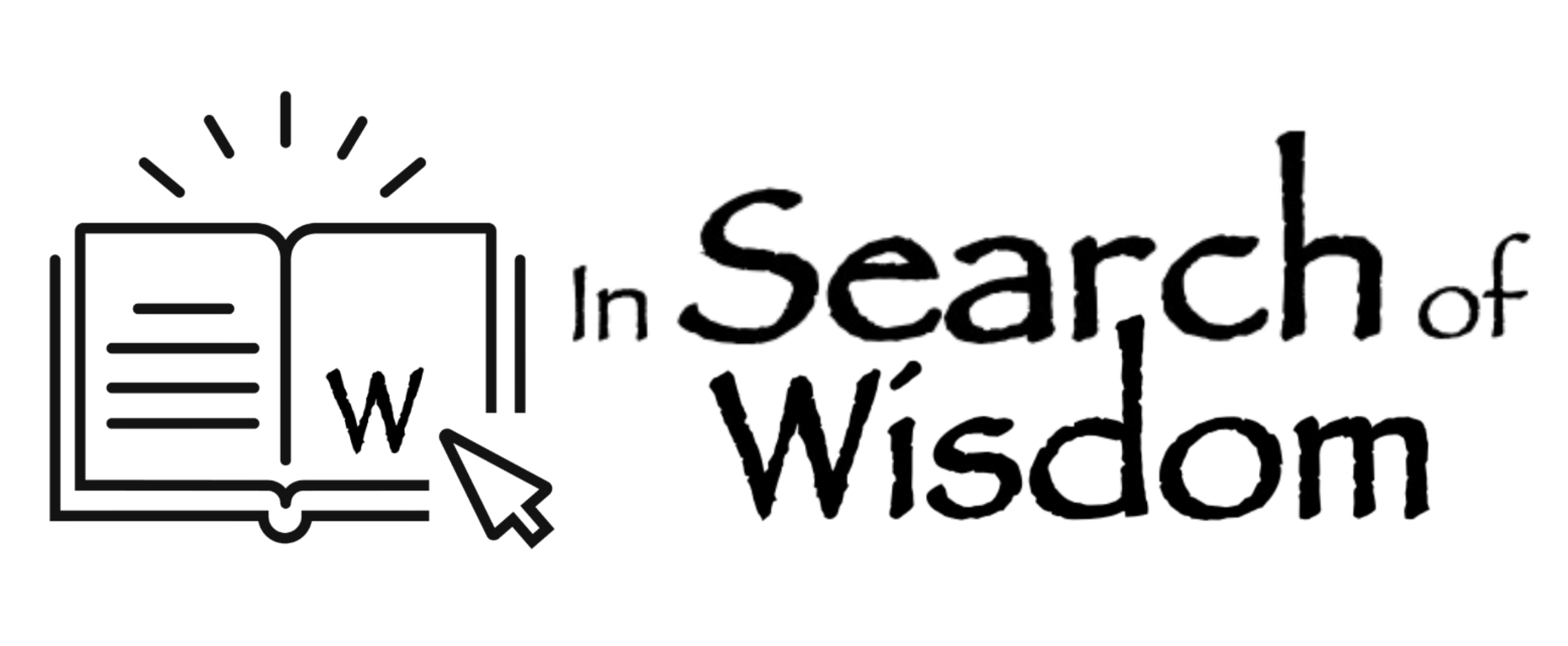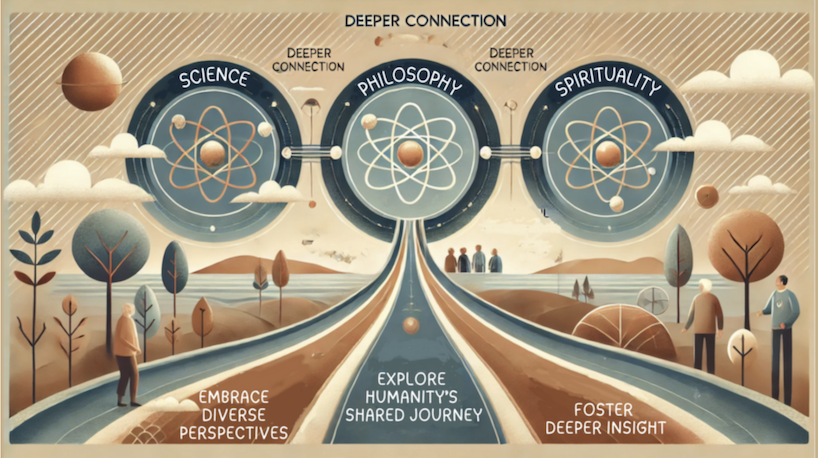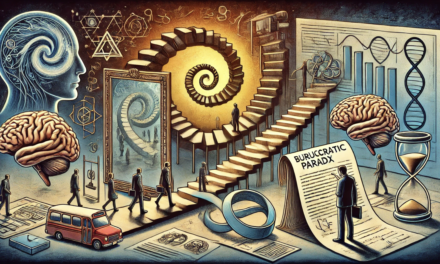A message of thanks to the members of Shepway and District u3a’s Science, Philosophy, and Spirituality group
We began this journey three years ago with a simple question: what can the intersection of science, philosophy, and spirituality tell us about the challenges facing humanity today? None of us knew quite where it would lead. I certainly didn’t imagine we’d trace a pattern running from the Bronze Age collapse through World History to our contemporary social media landscape, connecting them all through a single recognisable trap.
But that’s what happens when you give genuine inquiry time and space. Patterns emerge. Connections reveal themselves. Understanding deepens not through accumulation of facts, but through shared attention to what’s actually there.
This brief essay attempts to gather what we’ve discovered together – not as final conclusions, but as a harvest of our shared work. I offer it with gratitude for your patience, your questions, your willingness to stay with difficult material, and most of all, your companionship in this exploration.
The Journey We’ve Taken
Over these three years, I’ve prepared monthly sessions drawing on both established scholarship and emerging research, each building on what came before. Our curriculum has covered:
- How our understanding of the world has developed since the so-called Axial Age
- How the world’s faiths developed and changed
- A history of the world through non-Eurocentric eyes
- Contemporary challenges: climate change, social fragmentation, political polarisation
- How different ways of knowing – scientific, philosophical, contemplative – offer complementary perspectives
- How modern science is changing the way we understand the nature of reality
- The relationship between individual consciousness and collective patterns
- What it might mean for humanity to “grow up” as a species
The synthesis – the recognition of a single coherent pattern connecting these diverse historical episodes and contemporary challenges – emerged gradually through that preparation work, aided by AI thinking partners. I’ve then brought that developing understanding to our monthly gatherings, where your questions, reflections, and willingness to engage with difficult material have tested and refined it.
Some of you have grasped the pattern deeply; others are still wrestling with it – but all of you have made the inquiry possible through your companionship and sustained commitment month after month. What I’m calling “the consciousness trap” belongs to this shared journey, even though the mapmaking has been primarily mine.
The Pattern We’ve Recognised
Here’s what we’ve discovered:
The core pattern: Human symbolic intelligence – our remarkable capacity for abstract thought, language, planning, representation – operates in a distinctive way. It recognises some aspect of reality through relationship to it, then immediately captures that recognition in abstract logic. We map the territory, then begin treating the map as if it were the territory itself.
This isn’t a mistake exactly. It’s how symbolic intelligence works. The problem arises when we lose awareness that we’re operating with representations rather than reality. We start bypassing the regulatory feedback that actual relationship with reality would provide. We override natural constraints because our symbolic models tell us we can.
5,000+ years of institutionalisation: This pattern didn’t emerge yesterday. We’ve been embedding it into our social structures for millennia:
- Agriculture shifted us from participating in nature’s cycles to attempting to control them
- Writing and cities enabled abstract administration, replacing face-to-face relationship with symbolic management
- Empires developed remote control through symbolic power – laws, taxes, armies operating at a distance
- Legal systems institutionalised adversarial thinking: prosecution versus defence as the very structure of justice
- Parliamentary democracy made debate the foundation of governance – winning arguments rather than finding wisdom together
Each step seemed reasonable at the time. Each solved genuine problems. But each also embedded the consciousness trap more deeply into how we organise society.
The trajectory of override and collapse: Here’s where our historical study revealed something crucial. As Peter Turchin and Luke Kemp’s work shows, empires succeed one another in a clear pattern: each harnesses greater energy to improve military capabilities, uses those capabilities to conquer weaker kingdoms, and for a time appears more successful than its predecessors. Override capacity increases with each succession – more sophisticated technologies, larger territories, more complex administrative systems.
But the consciousness trap operates within each empire’s lifecycle through what Turchin calls the “wealth pump.” Symbolic intelligence focuses on markers of success – wealth accumulation, territorial expansion, monumental architecture – whilst becoming increasingly disconnected from regulatory feedback about sustainability. Elites overproduce, competing for limited positions. The masses become increasingly immiserated. The very override systems that made the empire initially successful create internal vulnerabilities that eventually make it susceptible to collapse.
The pattern repeats across Bronze Age civilisations, Rome, the Maya, and countless others. But here’s what matters most: for thousands of years, this was a regional problem. Empires rose and fell, causing tremendous human suffering, but the planet itself could absorb and recover from the damage.
What changed approximately 400 years ago was the birth of science, industrial technology, and truly global empire-building. Override capacity accelerated exponentially. We learned to harness fossil fuels, to industrialise warfare, to extend control across entire continents and oceans. The fruits of symbolic consciousness appeared as “efficiency” and “progress” on an unprecedented scale.
Now, for the first time in human history, override has become species-threatening. We’ve passed – or are perilously close to passing – the point of no or only difficult return. Climate change, biodiversity collapse, nuclear weapons, artificial intelligence operating at scales beyond human comprehension – these aren’t just regional vulnerabilities. They’re planetary-scale risks emerging from the same consciousness trap that brought down previous empires, but now armed with technologies powerful enough to destabilise Earth’s living systems themselves.
Today’s perfect storm: Our contemporary situation amplifies this ancient pattern at unprecedented speed and scale through three converging dynamics:
First, culture wars that drive people into tribal identities where every disagreement becomes existential. If you’re not defending your position, you’re betraying your tribe.
Second, screen-based communication that strips away the relational scaffolding – tone, facial expression, embodied presence – that normally helps us navigate disagreement without destroying relationship. We’re conducting our most heated exchanges through a medium that systematically removes the cues that would keep us connected.
Third, educational systems that teach adversarial debate as intellectual excellence whilst treating dialogue as a “soft skill.” We’re training each generation into the consciousness trap, rewarding those who excel at it with academic success and career advancement.
The intervention point: If we’re systematically reproducing the pattern through education, that’s also where we might interrupt it. What if we taught dialogue before debate? What if young people learned how to think together, how to hold multiple perspectives whilst remaining in relationship, how to distinguish between useful tools and ultimate truth – before they learned the arts of adversarial argumentation?
This isn’t about rejecting symbolic intelligence or critical thinking. It’s about providing the relational ground from which they can operate healthily, rather than letting them substitute for relationship itself.
The role of individual elders: Which brings us to us. Why does any of this matter for a group of people in their sixties, seventies, and eighties meeting monthly in Folkestone?
Because we’ve lived long enough to recognise patterns that only become visible across decades. Because we’re no longer building careers or defending reputations, which frees us to speak honestly about what we see. Because younger generations are watching how we navigate disagreement, uncertainty, and complexity – whether we model mature consciousness or remain trapped in adolescent patterns.
Our task isn’t to solve civilisational problems. It’s to embody – in our actual relationships and conversations – the mature consciousness that symbolic intelligence alone cannot provide. To practice stepping out of adversarial positioning into genuine dialogue. To create spaces where people can experience relationship across difference.
Small ruptures in the pattern. That’s what’s possible. Each conversation that shifts from debate to dialogue. Each moment when we catch ourselves treating our representations as reality and consciously step back into relationship with what’s actually present.
Small ruptures that might, eventually, become openings for something genuinely new to emerge.
What We’re Not Saying
Before closing, let me be clear about what this framework doesn’t claim:
We’re not saying symbolic intelligence is bad or that we should return to some pre-agricultural paradise. Symbolic thought is magnificent. It’s given us science, medicine, literature, mathematics, the ability to plan and coordinate across vast scales. We need it.
We’re not saying debate has no place. Sometimes adversarial engagement is exactly what’s needed – in courtrooms, in political contests, in academic peer review. The problem isn’t debate itself, but debate becoming the dominant mode, the default pattern, the definition of intellectual maturity.
We’re not saying we have all the answers. This framework emerged through our shared inquiry, but it’s provisional, partial, offered for testing against your own experience and understanding.
We’re not claiming to have escaped the consciousness trap ourselves. I certainly haven’t. The very act of writing this essay involves capturing living recognition in symbolic form, which immediately risks substituting representation for reality. The trap is built into how symbolic intelligence operates. We can’t eliminate it. We can only learn to notice when we’re caught in it.
Where This Leaves Us
Three years ago, we began with curiosity about big questions. Where we’ve arrived isn’t answers exactly, but something perhaps more valuable: a pattern we can recognise in action. Once you see how the consciousness trap operates – in personal relationships, in social media exchanges, in institutional structures, in historical collapses – you can’t quite unsee it.
But recognition isn’t despair. It’s the beginning of agency. We can’t change civilisational structures overnight. But we can change how we show up in our actual relationships. We can notice when we’re slipping into adversarial positioning and consciously choose dialogue instead. We can model for younger people what it looks like to think together rather than against each other.
We can be the intervention point, right here, in our particular corner of the world.
The work we’ve done together over these three years isn’t finished. Recognition keeps deepening. New connections keep emerging. The pattern reveals itself in new contexts. And each of you takes this understanding into your own relationships, communities, and circumstances in ways I’ll never know about.
That’s exactly as it should be. The consciousness trap operates at every scale – personal, communal, institutional, civilisational. Addressing it requires work at every scale too. Not a single solution imposed from above, but distributed practice: millions of small choices to step from debate to dialogue, from override to participation, from separation to relationship.
Thank you for walking this path with me. Thank you for your questions, your patience, your willingness to engage with difficult ideas. Thank you for being the kind of companions who make genuine inquiry possible.
The work continues. But today, we pause and acknowledge how far we’ve come.
Terry Cooke-Davies
20thNovember 2024
For Further Reading:
If you’d like to explore these ideas further, several essays are available on my website (https://www.insearchofwisdom.online) or substack (https://terrycookedavies.substack.com/), including:
- “The Consciousness Trap” – The core framework explained in more depth
- “Debate as Consciousness Trap” – How adversarial positioning operates in contemporary discourse
- “When Debate Becomes Identity” – The personal and social costs when positions become tribal markers
- “The Perfect Storm” – How today’s world creates a perfect storm of conditions to amplify the consciousness trap at civilisational scale.
- “The Great Remembering” – The broader developmental story these insights serve
I’m always grateful for your reflections, questions, and challenges. The work belongs to all of us.






